Every Spring, I look for new poison ivy plants in my backyard and neighborhood in the common places. I walk quite a bit, and the walking trails can have poison ivy plants all over.
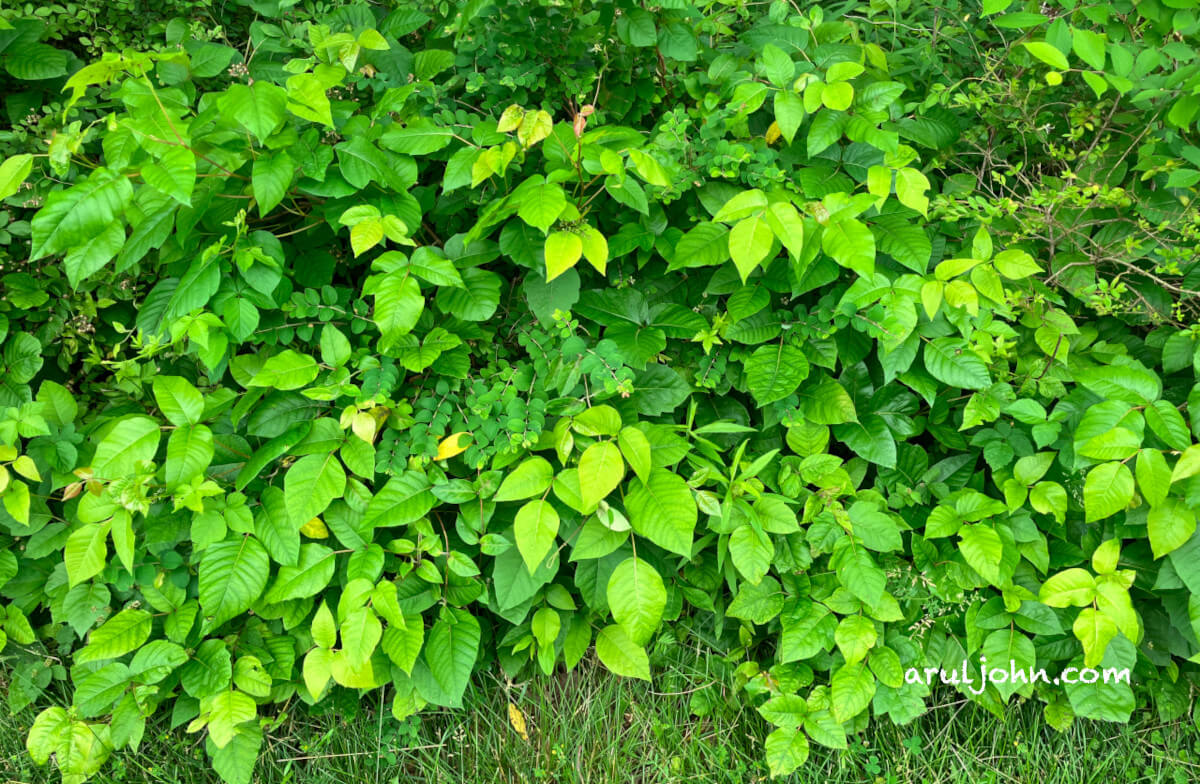
Table of Contents
- My history with poison ivy plants
- Poison ivy photographs in Virginia
- Poison ivy cluster by the roadside
- Poison ivy on fences
- Poison ivy growing among dead leaves
- Poison ivy creeper on a tree
- Poison ivy plant in early spring
- Urushiol in poison ivy is the culprit
- I have more questions about poison ivy
- Conclusion
My history with poison ivy plants
A few years ago, I ended up in Urgent Care at 10pm due to a horrible reaction with poison ivy plants that I was in contact with. The doctor also said that I may have touched poison oak and/or poison sumac.
Three weeks of steroids followed by a few months of recovery and some amount later left me with permanent scars around my ankles and a horrible memory of poison ivy.
Since then, while walking, I have been very careful about where my feet land, or what plants my arms touch, or what creeper plants I walk under.
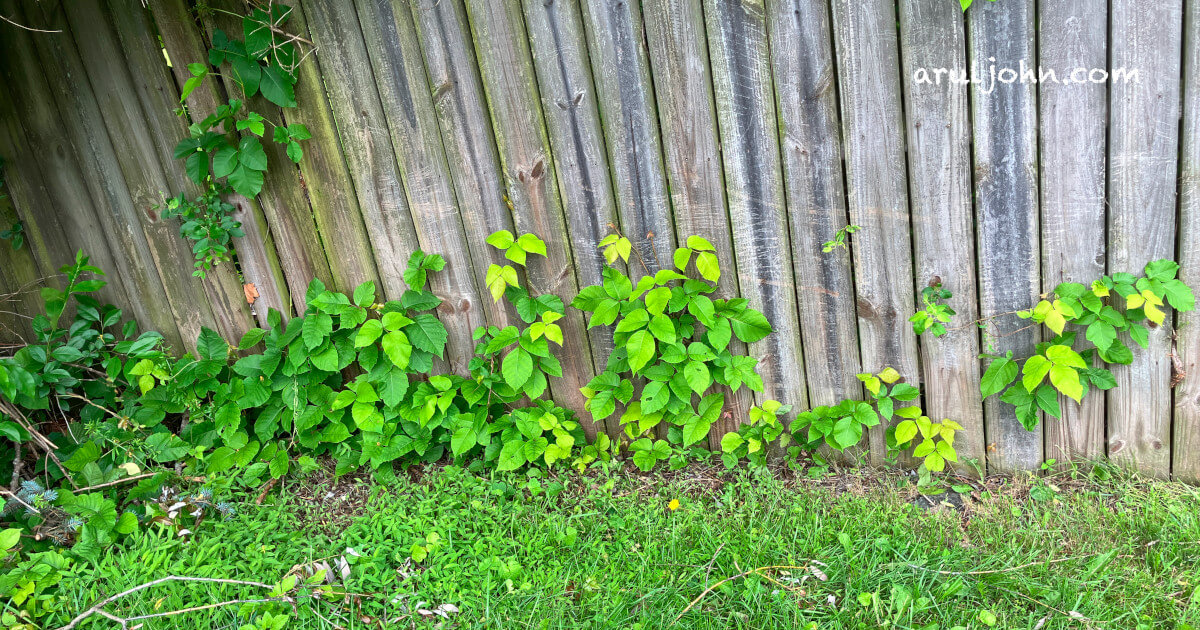
Poison ivy photographs in Virginia
All the photos in this blog post photos were taken in Herndon, Chantilly, Fairfax, Lorton, VA, various walking trails in northern Virginia, and the woods in Shenandoah.
There are other surrounding places where I took the photos, so I'll update this blog post with more photos.
Poison ivy cluster by the roadside
I pass by plenty of poison ivy plant clusters when on walking trails. They propagate fast and you see clusters like this.

Poison ivy on fences
This poison ivy climber grew up and decided to make the fence its residence.
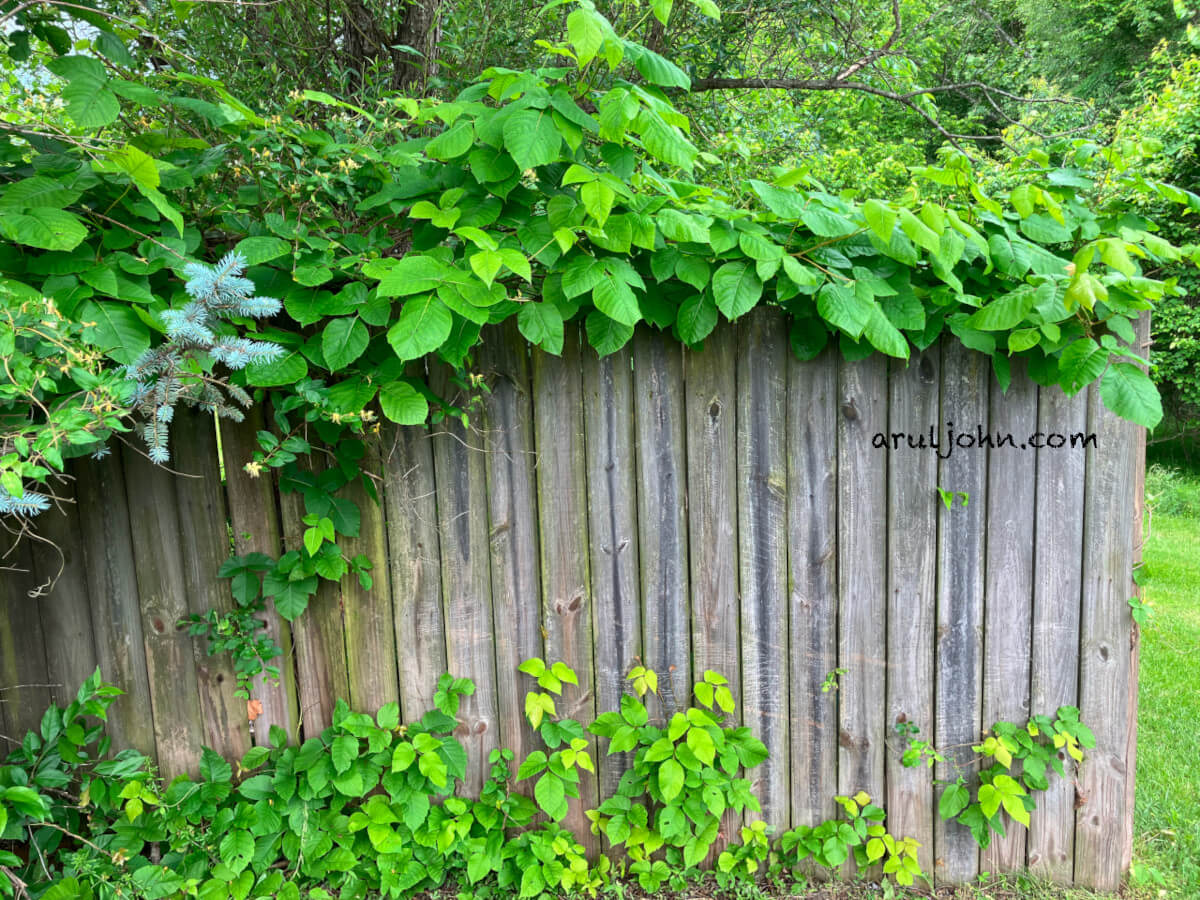
Poison ivy growing among dead leaves
These photos were taken in Shenandoah. This single poison ivy plant decided to grow among a large pile of dead leaves.

In another area with a large pile of dead leaves were these poison ivy plants.
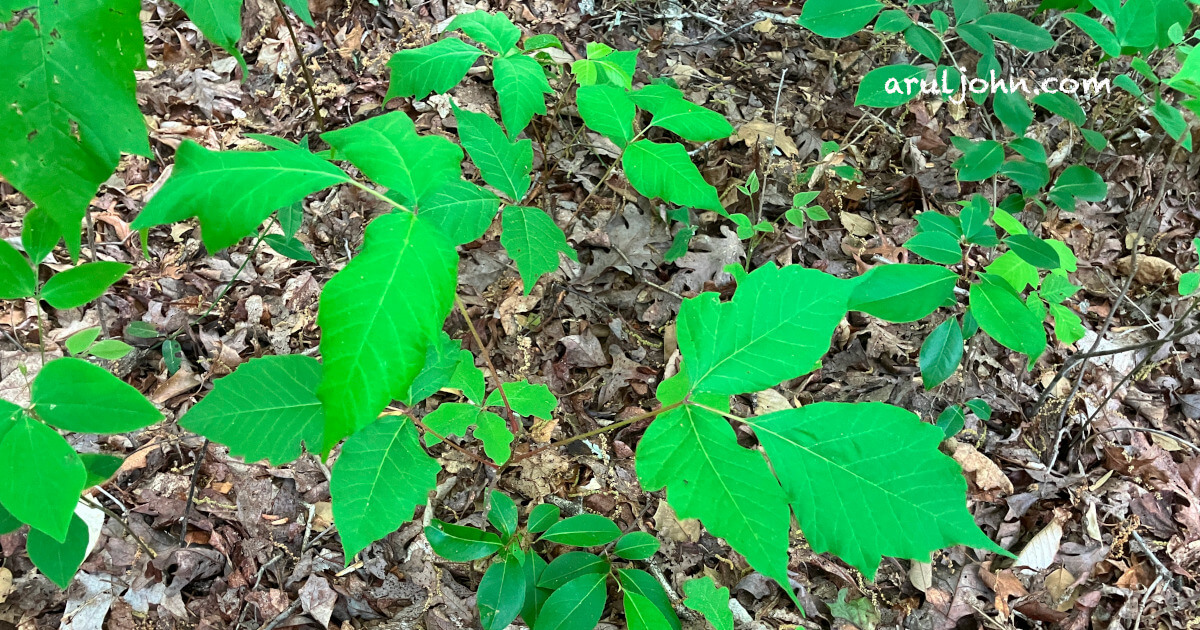
You may find snakes here too, so be careful if you are trying to collect dry leaves, for whatever reason.
Poison ivy creeper on a tree
This photo, also taken in Shenandoah, is one of the several trees that had poison ivy plant creepers finding their way up a tree.
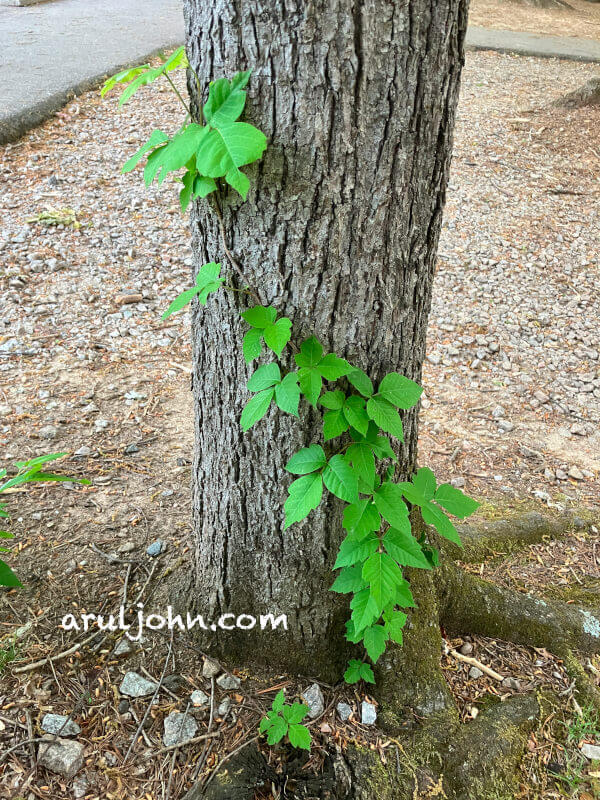
Poison ivy plant in early spring
This photo was taken in April 2025, around the end of winter, when spring had just kicked in. Notice the reddish-green color of the new poison ivy plants that showed up, usually uninvited.
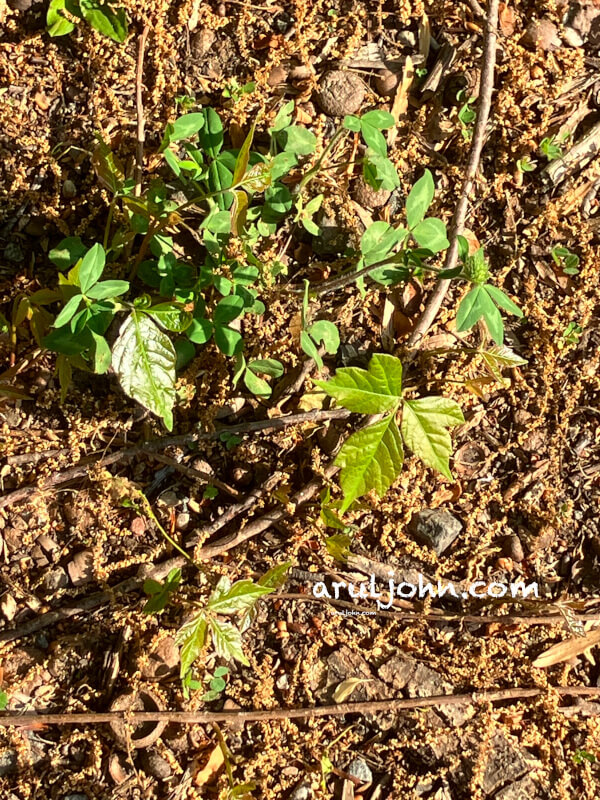
Urushiol in poison ivy is the culprit
Poison ivy is a plant that can cause allergic skin reaction by physical contact. In severe cases, the microdroplets produced from cutting a part of these plants can affect a person without contact too, just by wind blowing the sap towards the person. That can result in blisters and swelling of the body parts that were in contact with these toxic plants.
The sap or oil within these plants that cause the irritation. The sap contains an oil called urushiol, an oily substance that can stay on clothes and surfaces up to a year or so. In some cases, urushiol can stay on garden tools up to 5 years. This oil is responsible for rashes, itches, swellings, and all the reactions that occur to a human.
If your skin breaks out in rashes after touching a plant or its leaves, check what kind of a plant it is.
I have more questions about poison ivy
- What does poison ivy look like?
Look at the photos above👆 - Which is more dangerous - poison ivy, poison oak or poison sumac?
Poison sumac is the most lethal, followed by poison oak and then poison ivy - How can I get rid of poison ivy in my backyard or garden?
Digging around it, roots included, is the best way. Alternative methods include dousing it with vinegar or bleach. - I touched poison ivy. What can I do now?
Think of poison ivy as engine grease. Wash it properly with Dawn soap. - Can I use Roundup to kill poison ivy?
NO. Please, no! Roundup works sometimes, but the bigger issue is they are carcinogenic and there are lawsuits about it floating around. Please search for that information online. - What is the best way to kill poison ivy?
Digging around the poison ivy, if it is a small plant. The smaller, the better. if it is a lot of poison ivy, vinegar spray will do the trick, but you need several applications of it. - How many types of poison ivy plants exist?
At least two. - Where is poison ivy found?
Many parts of the US and other countries as well. - How long does poison ivy sap or urushiol stay on clothes and objects?
A year or more. - Poison ivy touched my clothes. What can I do?
Throw your clothes in the washer and wash on hot setting for a full cycle. - This plant has leaves in sets of 3. Is it poison ivy?
Maybe or may not be poison ivy. There are many 3-leaf plants including white swamp oak, and different kinds of berry plants that have leaves of 3. - There are poison ivy plants growing in a cluster. How do I kill them?
Vinegar would be the best. Bleach works too, but then it can kill the ground as well and make it impossible to grow any plants in the near future. - Are dried poison ivy branches or roots safe to touch?
No. Urushiol exists on dead roots and branches as well. If removing them, please wear gloves and handle with care.
If you have more questions, please read my blog post about poison ivy, poison oak, poison sumac. It contains detailed information about how to detect poison ivy and different ways in getting rid of it.
Conclusion
This is my personal blog and photos I took of poison ivy plants in different places in Virginia. If you love poison ivy plants and/or not allergic to them, good for you. If you hate them or have been affected by them, you might find this blog post useful so you know which plants to avoid. Thanks for reading.
Related Posts
If you have any questions, please contact me at arulbOsutkNiqlzziyties@gNqmaizl.bkcom. You can also post questions in our Facebook group. Thank you.